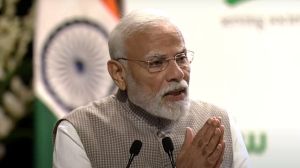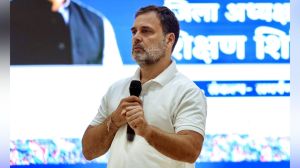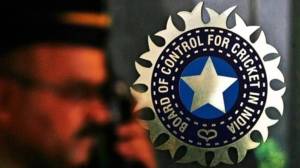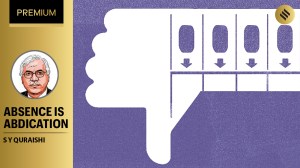Click here to follow Screen Digital on YouTube and stay updated with the latest from the world of cinema.
Salaar, Rocky and Agastya: The angry young Amitabh Bachchans in Prashanth Neel-verse
For KGF and Salaar director Prashanth Neel, Amitabh Bachchan serves as an inspiration when crafting male leads, particularly drawing from the grey roles of Bollywood's Shahenshah.
 In Prashanth Neel's Ugramm, KGF and Salaar, the influence of Amitabh Bachchan's characters, particularly those from his 'angry young man' films, is very evident.
In Prashanth Neel's Ugramm, KGF and Salaar, the influence of Amitabh Bachchan's characters, particularly those from his 'angry young man' films, is very evident.From Dilip Kumar and Raj Kapoor to Kamal Haasan, Naseeruddin Shah and Irrfan Khan, Indian cinema has consistently had extraordinary male actors who, along with their female counterparts, significantly impacted and moulded visual art, while in/directly enabling writers and directors to push boundaries, resulting in the creation of more intricate works.
Although these actors have mutually inspired each other and subsequent generations of talent, leaving a lasting impact on viewers as well, the influence of Amitabh Bachchan in the realm of Indian cinema remains unmatched. Beyond creating shockwaves with his remarkable acting skills and versatility, effortlessly portraying a range of emotions and drama while excelling in action and dance sequences, Big B redefined stardom in India, earning admirers nationwide, transcending language barriers. The characters tailored specifically for him to fit the ‘angry young man’ archetype, left a profound mark on various film industries across India, paving the way for regional endeavours to replicate similar movies, catapulting local stars to greater heights. Yet, no one could replicate what Bachchan achieved.
Even for director Prashanth Neel, who took the country by storm with the KGF franchise and Prabhas-starrer Salaar: Part 1 – Ceasefire, Amitabh Bachchan serves as an inspiration when crafting male leads in his movies, particularly drawing from the grey roles the Shahenshah of Bollywood portrayed over the years.
The impact of Bachchan’s characters was so profound that even the highest-grossing Indian film of this year, Atlee Kumar’s Shah Rukh Khan-starrer Jawan, can be traced back to Big B’s ‘angry young man’ era, wherein the male leads carried shades of grey but can’t be dubbed as absolute villains as they embodied such a demeanour to fight the bigger evil.
According to the Cambridge Dictionary, the basic definition of the word “hero” (noun) is “a person admired for bravery, great achievements or good qualities.” The term “good qualities” holds particular importance, serving as a key factor in identifying the hero and the villain. Indian cinema too has constantly adhered to this formula.
However, during the 1970s, a period marked by increasing youth unemployment in the country, a new type of hero emerged, taking on the system single-handedly and employing violence without hesitation to achieve his objectives. It was around this time that the new kid in town, Amitabh Bachchan, barely four films old, took on the role of the anti-hero in Jyoti Swaroop’s Parwana (1971). Bachchan’s portrayal of the ruthless Kumar Sen, determined to do whatever it took to “win” the love of his life, captivated everyone and revealed a side of the actor filled with raw and rugged masculinity that could be leveraged. However, it wasn’t until two more years later that screenwriting duo Salim–Javed recognised Big B’s potential and revived his career with Zanjeer (1973), directed by Prakash Mehra. The tall, handsome and macho Amitabh, known for his deep bass voice, impressed all with his ‘angry with the system’ young man character, Vijay Khanna.
After Parwana, although Bachchan took on out-and-out anti-hero roles only a few more times, his anti-establishment heroes weren’t fundamentally different from the former type. The only distinction was that the latter had their hearts in the right place. Nevertheless, their lifestyles, approaches, reactions to challenges and adversaries, and so forth, had similarities, with blood smeared all over them. However, the swagger, confidence, emotional depth and dramatic flair with which Bachchan portrayed such characters, imbued with inherent goodness, in films like Deewaar (1975), Faraar (1975), Kaala Patthar (1979) and Agneepath (1990), among others, were truly remarkable. These characters and his performances not only captivated the youth of that era, inspiring them to assert themselves, but also prompted filmmakers to craft narratives that transcended the conventional realms of drama, comedy and romance.
Meanwhile, Bachchan also redefined characters with shades of moral ambiguity over the years, depicting their indifference towards others as a result of the emotional turmoil they endure. Nevertheless, it is undeniable that Bachchan’s outstanding performances in such roles, such as Narayan Shankar in Mohabbatein (2000) and Yashvardhan Raichand in Kabhi Khushi Kabhie Gham (2001), have unfortunately contributed to the glorification of undesirable behaviours. Thus, it is safe to say that he is the one who made grey characters lovable and inspiring.
“Amitabh Bachchan is the biggest inspiration for all my movies. There are a lot of movies that he did where he played the hero but he was also the villain. That’s a genre that was rarely seen post that period. The way he portrayed the greys, I don’t think anybody else did it,” Salaar director Prashanth Neel told PTI. “He made villainy look heroic. So, I try to do that with my movies… I try to make my characters look as negative as possible, even the positive ones. The hero has to be the biggest villain of my movie.”
His first-ever directorial, Ugramm (2014) starring Srimurali in the lead role, is itself a testament to this, as the central character, Agastya, exudes Bachchanism. In Ugramm, Agastya is a working-class hero, an automobile mechanic. Despite leading a modest life, his demeanour hints at an underlying intensity, resembling a dormant volcano ready to unleash fiery strength when circumstances demand. As we uncover his past, wherein he single-handedly conquered a region ruled by ruthless criminals, Ugramm inevitably draws parallels to Bachchan’s character Vijay Verma in Yash Chopra’s Deewaar, among others. Similar to Vijay’s dynamic with his brother Ravi Verma (Shashi Kapoor), a comparable relationship unfolds in Ugramm between Agastya and his close friend Bala (Tilak Shekar). However, as the film progresses, their roles as pillars of strength transform into significant obstacles in the respective journeys of both Vijay and Agastya.
Much like many of Bachchan’s anti-establishment heroes, Agastya, too, is a victim of the escalating influence of organised crime in society, compelling him to enter that world out of necessity. However, Agastya is not entirely malevolent either.
In his second directorial venture, KGF: Chapter 1, Neel heightened the hero archetype by 1,000 folds, introducing a more intense and unrestrained character in Rocky (Yash).
Actor Prithviraj Sukumaran, who plays a key role in Salaar, remarked in a chat with Film Companion that KGF 1 “was a quintessential Salim–Javed-Amitabh Bachchan 70s film” for him. This observation holds true, with the only distinction being that KGF 1 was executed on a grander scale, featuring enhanced technical elements and a more ruthless protagonist unhesitant in eliminating everyone within each square foot of an area before killing the main villain, in contrast to Bachchan films, where the heroes typically eliminated only the primary antagonists.
Similar to Bachchan movies, the scenes featuring the hero in KGF films are like short movies, paying special attention to his introduction, an elevation point in the middle and a significant conclusion. Adhering to this formula consistently highlights Rocky’s commanding presence in KGF. Emerging from a background marked by severe poverty and helplessness, reminiscent of the angry young men, Rocky symbolises the struggles of the impoverished. Even the majority of Chapter 1 posters depict Rocky as a working-class hero, holding a shovel and dressed in clothes stained with dirt, just like Bachchan in the first shot of Kaala Patthar.
In a notable moment, after Rocky saves an entire community labouring at the Kolar Gold Fields, facing severe oppression from their “masters”, a few local children approach him and say, “In movies, there is one person, right? When I see you, I feel the same way. Not the hero… The Villain,” enabling Rocky to face no constraints to conform to the hero archetype.
In contrast, KGF 2 presents Rocky in a manner reminiscent of the heroes in the latter part of the ‘angry young man’ films when he has attained affluence. Despite wielding considerable power and leading a more violent lifestyle, Rocky remains dedicated to the well-being of others. Concurrently, a love interest becomes part of his life, only to meet a tragic end, thereby giving the angry young man a more substantial character development and unleashing him in a more profound way.
The culmination of this archetype occurs in KGF 2 as Rocky storms into the Parliament and guns down a minister, underscoring the frustration these characters feel toward the system and those in positions of power.
In an interview with Kairam Vaashi, Prashanth Neel said that his latest movie Salaar is a retelling of Ugramm’s story. Though Salaar is a revamped iteration of Ugramm, Neel elevates the emotional elements and emphasises the camaraderie between the two main characters, Deva aka Salaar (Prabhas) and Vardha (Prithviraj Sukumaran), reminiscent of Vijay and Ravi in Deewaar or Jai (Bachchan) and Veeru (Dharmendra) in Ramesh Sippy’s Sholay (1975). Also, similar to Bachchan’s numerous portrayals of angry young men, Deva’s character is portrayed as exceptionally close to his mother, who serves as the sole force capable of calming him. Many facets of Deva’s persona, including his demeanour and smoking habits, appear to draw inspiration from Big B’s nuanced grey characters.
Even Neel’s choices for lead actors, except for Srimurali to an extent, align with Bachchan in terms of height, with both Yash and Prabhas standing over 1.80 m.


Photos
- 01
- 02
- 03
- 04
- 05
































